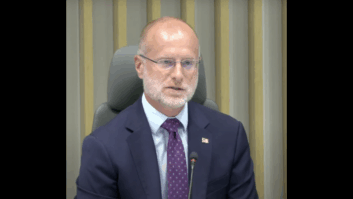The Federal Communications Commission this week approved two waivers for broadcasters wanting to use 11 GHz links to deliver their signals: Clear Channel in New York City and Greater Media in Boston.
The cases are interesting because they have to do with evolving radio STL technology, specifically using 11 GHz links to deliver digital radio signals.
Clear Channel subsidiary AM/FM asked for a waiver to use its Microwave Industrial/Business Radio Pool Licenses WQHP740 and WQHP743 in the 10.7–11.7 GHz band as studio-transmitter links between its studio and the transmitter site at Empire State Building and 4 Times Square.
Commission rules ban the use of the 11 GHz band as the final RF link to deliver AM or FM signals to a transmitter site. Clear Channel said it could not find any viable frequencies typically used for STLs in the desired locations. Since the loss of the World Trade Center as a transmitting location in 2001, many stations moved their transmitters and now there’s a concentration at Empire and 4TS. That concentration, says AM/FM, has complicated delivery of broadcast signals from station studios to these transmitting sites by taxing the usual STL frequencies.
AM/FM said other potential frequencies, such as the 948 MHz band and the 18 GHz band, are not available because of potential interfere with microwave licensees. AM/FM asked for the waiver for the frequencies in 11.2 GHz band based on equipment availability, adequate reliability and spectral efficiency. Clear Channel is not only planning to use the licenses to transmit its HD Radio signals to Empire and 4 Times Square, but also for data connections from the transmitters to the studios and data paths for business network uses.
No oppositions or objections were filed and the commission approved the waiver, saying Clear Channel showed no alternatives were available and that the broadcaster is trying to address, in part, a unique situation created by the loss of the World Trade Center.
The FCC approved a similar waiver for Greater Media Boston, which applied to use licenses for new, fixed point-to-point microwave stations in the 11 GHz band as STLs to deliver programming to transmitter sites for WROR(FM), Framingham; WMJX(FM), Boston; WBOS(FM), Brookline; and WTKK(FM), Boston.
Greater Media owns five Class B FMs in the Boston metro and says with the advent of HD Radio, the amount of audio and data that it needs to send from studios to its various broadcaster transmitter sites has grown enormously. GBR said it must rely on spectrum in the 11 GHz band to deliver the broadcast signal from its main studio location to its transmitter sites in Andover and Newton, Mass., and at the Prudential Building in Boston
It, too, provided backup evidence that other frequencies either won’t work or have been tried and had to be abandoned because of problems. “GBR concludes that operation in the 11 GHz band would result in the most spectrally-efficient usage, which would not cause interference to other licensees, and would not suffer substantial fade due to terrain and weather factors,” stated the FCC in its decision.






